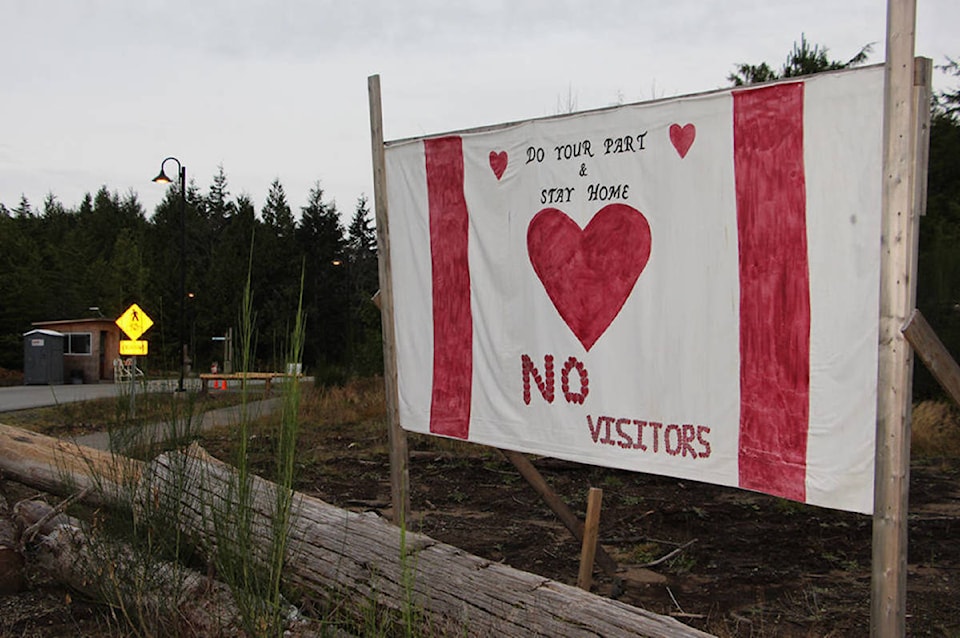The First Nations Health Authority said they are “very pleased” that 18 remote and rural First Nations communities were considered top priority during the first wave of the COVID-19 vaccine rollout.
“This is an important development and a sign we’re turning to a new phase of hopefullness in facing this pandemic,” said FNHA CEO Richard Jock in a Zoom press meeting Wednesday (Jan. 6) afternoon.
Approximately 25,000 members of remote First Nations communities are scheduled to receive their first doses of the COVID-19 vaccine from December to February. The B.C. government’s rollout plan considers these isolated communities to be among the top priority groups, along with long-term care workers and residents, paramedics and hospital health workers.
Acting Chief Medical Officer Dr. Shannon McDonald said reaching this point is a full year’s work in the making. McDonald said throughout the pandemic, communities have been concerned especially for elders, who are not only the most vulnerable to COVID-19, but also cultural pillars, holding knowledge and preserving languages.
RELATED:
Dr. Becky Palmer, FNHA chief nursing officer, said the first doses have been delivered in a “culturally safe, acceptable and humble way.”
“It is a historic time with tremendous partnership across all layers of the system to get us to today,” Palmer added.
FNHA senior medical officer Dr. Nel Wieman said through the pandemic restrictions on social gathering and cultural events has hit First Nations communities especially hard.
“This hope is here that eventually things will change and we will be able to gather together again for cultural activities and ceremonies,but it is not that time yet,” Wieman added.
Weiman said the vaccine distribution doesn’t come without apprehension among First Nations communities. From historical factors such as medical experimentation in residential schools to more contemporary issues of systemic racism in health care, she acknowledged there are several reasons some may hesitate to take the vaccine.
“”We have been made a priority and have confidence in that vaccine,” she said. She added a variety of messaging is in the works; Palmer is expected to film an informational video on the vaccine later this week.
McDonald said the FNHA wants to balance individual choice to get the vaccine with being able to deliver enough doses to create effective immunity.
“This is their choice; it’s not a mandatory vaccine and we want to help people understand it’s their choice,” McDonald said. “People aren’t unaware of the risks, but we have to balance their concerns and risks with the knowledge we’re giving them.”
McDonald expects a majority of First Nations community members to take the vaccine, even with this non-mandatory approach.
RELATED:
“They’re very much interested in taking care of each other as much as themselves,less individualistic and more about community wellness,” she said.
Palmer added the FNHA has built strong relationships with community members in being available to answer questions related to COVID and the vaccine.
“We want to walk alongside them in their journey, and that’s created a tremendous response in terms of feeling comfortable,” Palmer said. “It’s just a really solid way to build going forward together.
Wieman urged First Nations communities yet to receive doses to take heart.
“Don’t be discouraged by having to wait,” she said. “This is an immense operation. Everybody who wants the vaccine will get the vaccine.”
An additional 25,000 vaccine doses for First Nations communities are planned for February and March. These doses are part of 792,000 of the Pfizer and Moderna vaccines to be distributed through March. As of Monday, Jan. 4, the province has received approximately 54,000 doses; officials expect an additional 16,000 this week.
The following First Nations communities have received 5,300 doses as of Monday:
- Ahousaht (520)
- Ehattesaht/Chinehkint/Nuchat laht (110)
- Gitga’at (200)
- Gitxaala (400)
- Huu-ay-aht (110)
- Iskut (300)
- Kitasoo (300)
- Klahoose (60)
- Kwadacha (300)
- Kyuquot (140)
- Lax Kw’alaams (600)
- Mowachaht/Muchalaht (190)
- Namgis (770)
- Tahltan (300)
- Takla (200)
- Tsay Keh Dene (200)
- Ulkatcho (600)
Government reports say the second vaccine doses will be administered about 35 days after the first. As of Wednesday, McDonald said no other community names have been released yet.
Alhtough vaccination is a milestone in fighting the pandemic, Wieman cautioned the public to remain vigilant in following measures preventing the spread of COVID-19.
“This past year has been a challenge for everyone,” Wieman said. “Our communities are working very hard to keep people safe. Ultimately, we will all get through this.”
adam.louis@bpdigital.ca
Like us on and follow us on .




